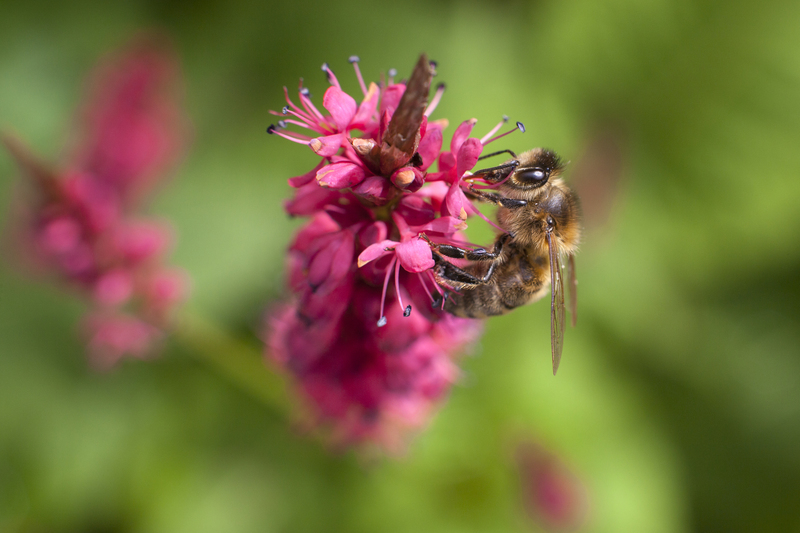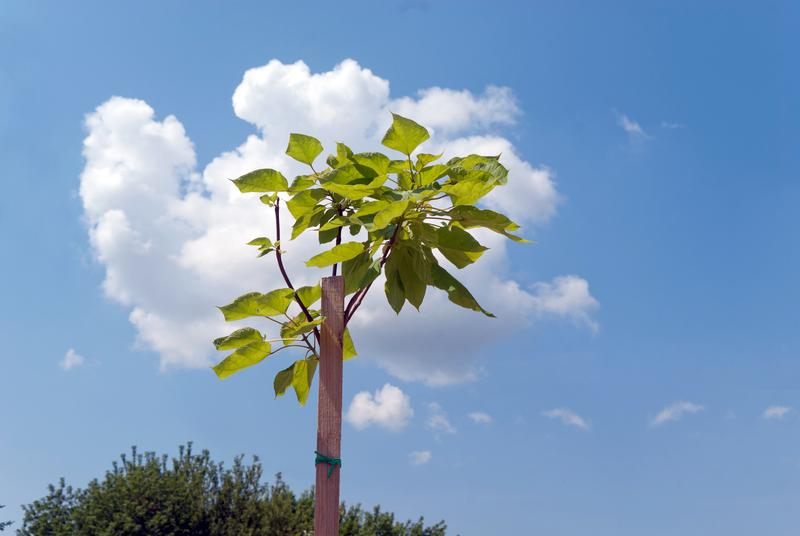Creative Techniques in Hedge Sculpting and Trimming
Posted on 04/06/2025
Creative Techniques in Hedge Sculpting and Trimming
Are you fascinated by gardens that showcase whimsical animal shapes, intricate geometric patterns, or elegant waves and spirals carved out of lush green hedges? Hedge sculpting and trimming - the art of shaping living plants into expressive designs - has delighted landscapers, gardeners, and property owners for centuries. Whether you are keen to transform your ordinary shrubs into extraordinary showpieces or simply want to sharpen your hedge-trimming skills, this comprehensive guide unveils creative techniques and expert tips to elevate your outdoor space.

Understanding the Art of Hedge Sculpting
Hedge sculpting, also known as topiary, involves the meticulous process of trimming and training living plants - especially hedges and shrubs - into clearly defined shapes and forms. This ancient practice traces its roots to Ancient Rome but has since flourished worldwide, from the geometric parterres of formal French gardens to whimsical English maze hedges.
Before diving into advanced techniques, it's crucial to understand the foundations of hedge trimming:
- Plant Selection: Not all shrubs are built for sculpture. Choose dense, evergreen varieties such as boxwood, yew, privet, or holly for optimal shaping.
- Patience and Planning: Hedge sculpting is an ongoing process. Good planning, patience, and regular maintenance are key to impressive results.
- Tools Matter: Quality hand shears, electric trimmers, loppers, and shaping frames enable precise cuts and defined shapes.
Principles of Artistic Hedge Shaping
1. Symmetry and Balance
Well-designed hedge art depends on symmetry and balance. Strong, clear lines create visual harmony and make even simple shapes stand out. When shaping geometrical forms (like spheres, cubes, or pyramids), measure regularly and step back often to check the overall alignment.
2. Gradual Approach
A creative hedge sculpture is not made overnight. Gradually work towards your desired shape by removing small amounts of growth at a time. Constantly reassess your progress, ensuring not to cut too deeply into old wood, as some shrubs may not recover.
3. Layering and Depth
Add an extra dimension to your shapes using the concept of layering. Start with bold outlines and subtly introduce depth by shaping overlapping forms, tiered edges, and textured surfaces. This gives your hedge sculpture a dynamic, three-dimensional appearance.
Popular Techniques for Hedge Sculpting and Trimming
Let's explore some distinctive techniques and methods that elevate the art of hedge trimming:
1. Geometric Precision
Geometric hedge sculpting remains a cornerstone of classical garden design. Boxwood balls, cones, cubes, and pyramids are favorite motifs for modern and traditional landscapes alike.
- Use guiding tools: Attach strings between stakes to create straight lines or use frames to guide circular trimming.
- Shape in layers: Work from the top down and outside in, making gradual, measured cuts.
- Frequent trimming: Regular, light trims encourage dense growth and sharp edges.
2. Topiary Animal and Object Shapes
For those seeking whimsical and imaginative appeal, animal and object topiary is highly rewarding. From spiraling peacocks to galloping horses, these living sculptures make a powerful garden statement.
- Wire frames: Use topiary frames as a skeleton for training young plants or more intricate designs.
- Step-by-step carving: Outline the silhouette before focusing on the details, refining legs, tails, or other features slowly with hand shears.
- Maintenance: Such designs require frequent, delicate trims to maintain shape and prevent overgrowth.
3. Abstract and Freeform Designs
Push your creative boundaries by crafting abstract forms, waves, and arches. Freeform hedge sculpting provides a modern twist and can transform an ordinary hedge into an eye-catching feature.
- Experimentation: Don't be afraid to try irregular or undulating shapes.
- Layer textures: Combine contrasting heights and plant species for additional interest.
- Blend colors: Some evergreen varieties offer subtle shifts in hue, giving your designs extra vibrancy.
4. Maze and Parterre Design
Hedge mazes and patterned parterres are the pinnacle of formal garden design. These intricate arrangements require careful planning, layout, and ongoing upkeep.
- Mark the layout: Use chalk or rope to map the hedge lines before planting and trimming.
- Shape regularly: Keep edges crisp and heights even for a uniform effect.
- Account for growth: Allow adequate space for hedges to mature without overcrowding.
Step-by-Step: How to Sculpt a Basic Hedge Shape
Ready to try your hand at hedge sculpting? Follow this simple step-by-step process for creating a classic ball or cube form:
- Choose Your Hedge: Opt for a dense, healthy shrub such as boxwood or yew.
- Set Up Guides: For spheres, use a wire circle guide or homemade template. For cubes, mark corners and edges with canes and string.
- Trim the Outline: Use sharp shears to define the outer edge, standing back occasionally to check the proportions.
- Shape the Details: Gently sculpt urn-like curves, faces, or straight sides, working slowly and evenly.
- Finishing Touches: Step back, assess, and make minor adjustments for symmetry and fullness.
Tip: Always clean your tools between plants to prevent the spread of diseases.
Advanced Creative Hedge Sculpting Ideas
Once you master basic shapes, challenge yourself with these advanced hedge shaping concepts:
- Tiered Formations: Stack spherical or conical tiers for a multi-level effect, reminiscent of traditional Japanese garden designs.
- Themed Characters or Letters: Shape hedges to spell out greetings, create logos, or depict recognizable scenes for events and celebrations.
- Hedge Walls and Arches: Develop living privacy screens or dramatic archways that invite visitors through lush green tunnels.
- Living Sculpture Gardens: Combine various shaped hedges and other landscape elements to curate an interactive outdoor art gallery.
Best Practices for Healthy, Beautiful Hedges
No matter how creative your hedge trimming and sculpting techniques, healthy plants are the foundation of stunning results. Adopt these best practices:
- Prune at the Right Time: Early spring and mid-summer often work best. Avoid late autumn or winter, as fresh cuts may damage plants in cold weather.
- Water and Feed: Regular irrigation and a balanced fertilizer keep foliage lush and responsive to trimming.
- Sunlight and Airflow: Trim hedges so the base is slightly wider than the top. This allows lower sections to receive sunlight and slows thinning from underneath.
- Monitor Pests and Disease: Inspect regularly for signs of trouble. Timely intervention preserves both shape and health.
Tools and Equipment for Artistic Hedge Trimming
Quality tools ensure cleaner cuts and more precise shapes. Your hedge sculpting toolkit should include:
- Hand Shears: Perfect for detail work and smaller shrubs.
- Electric or Battery Trimmers: Efficient for larger hedges and even surfaces.
- Loppers: Handle thick or woody stems at the base of hedges.
- Topiary Frames: Serve as shaping guides, especially for complex shapes.
- Measuring Tape, Canes, and String: Ensure lines are straight and results are symmetrical.
Sharpen and sanitize your tools frequently to maintain healthy plants and cleaner cuts.
Common Mistakes to Avoid in Hedge Sculpting
It's easy to get carried away, but novice sculptors often fall into these traps:
- Cutting too Drastically: Heavy cuts can shock the plant and delay recovery. Small, frequent trims are preferable.
- Ignoring the Base: Taper the hedge base so sunlight reaches all levels. A shaded base leads to thinning and browning.
- Starting on Old, Overgrown Hedges: Not all old shrubs are fit for intricate shapes. Sometimes starting fresh is the better path.
- Forgetting Ongoing Care: Creative hedge shapes require consistent maintenance for their design to last.

Inspiring Examples of Hedge Art Around the World
Gain inspiration from some of the world's most famous hedge artistry:
- Levens Hall Gardens, UK: Home to the oldest topiary garden, showcasing dramatic geometric and animal forms dating to the 17th century.
- Chateau de Villandry, France: Renowned for its formal parterre gardens and labyrinthine hedges.
- Marqueyssac Gardens, France: Over 150,000 boxwood bushes transformed into fantastical cloud shapes and undulating waves.
- Longwood Gardens, USA: A showcase of inventive seasonal topiary exhibits and maze-like hedges.
Conclusion: Elevate Your Garden With Creative Hedge Sculpting
Creative hedge sculpting and trimming offers an imaginative way to express your personal style, create visual drama, and add lasting value to any garden or landscape. From classic spheres and sharp pyramids to bold animal figures and abstract patterns, the possibilities are as vast as your imagination allows. Remember, it's not just about plants and pruning - it's an art form that evolves over time, rewarding patience and care with breathtaking living sculptures.
Whether you're a professional landscaper, a passionate hobbyist, or someone new to topiary, embrace the artistry and transform your hedges into masterpieces. Regular care, patience, and a spirit of experimentation are your best tools in the journey towards extraordinary garden design.
Start small, dream big, and let your creativity flourish through the art of hedge shaping!

